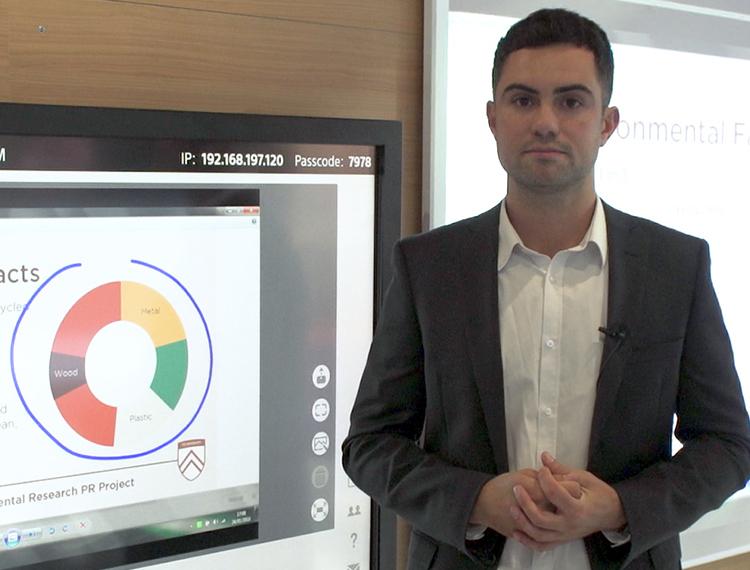Highlights from BETT: A Glimpse of the Future

Every year, the British Education Training and Technology Show (BETT) in London inspires us by showcasing the latest and greatest advancements in education technology – and this year was no different. From virtual visits to the trenches of World War One to drone coding competitions or two-dimensional football matches, BETT has once again reminded us that technology is fundamentally changing the way we teach, learn and communicate with each other.
In a constantly-evolving world, this progress is essential. Research by the World Economic Forum has shown that 65 per cent of children in the education system today will end up working in careers that don’t even exist yet. To arm today’s students with the knowledge they need to compete in tomorrow’s job market, school curricula need to adapt and constantly re-evaluate what they teach. But while initiatives like making coding a mandatory part of the UK curriculum are invaluable, it is equally important to look at what channels and technologies are being used to teach these new subjects.
The reality is that today’s students are a tough crowd to engage with and tried-and-tested teaching methods simply no longer cut it. Part of the challenge here is that students currently have the shortest attention span of any generation due to their exposure to huge amounts of technology and constant and instantaneous iterations to improve it. Combine this with being used to very limited levels of friction in the services they use and demanding instant gratification for their contributions, it’s unsurprising that education is set to be an industry for huge change in 2018 and beyond. In order to keep students of today and tomorrow engaged over a sustained period of time, courses need to be varied, both in terms of what is being taught but also what medium it is presented through. Looking at some of the stands and presentations at BETT this year, it seems the edtech sector already has plenty of ideas on how to tackle these issues.
Classrooms: a blast from the past
Modern students are incredibly tech-savvy and already use a variety of devices and smart systems at home or with friends on a daily basis. Yet, when they are at school, they are often met with outdated technologies and devices, some of which they have never even heard of. Schools and universities have realised that a key part of creating more meaningful engagement with their students is to resolve the dissonance between the technology students use at home and the technology available in classrooms.
Using devices that students are already familiar with, like smart phones, tablets or even wearables, and integrating them into the IT infrastructure of the school is one of the key solutions on offer at BETT. Systems that allow teachers and students to seamlessly share and display content from any device across different screens are inevitably part of the classroom of the future. This technology also supports active learning, a technique that actively involves students in the teaching process and that has been shown to increase student learning by up to 38%.
A whole new world
With the proliferation of Virtual Reality (VR) and Augmented Reality (AR) across the gaming, medical, engineering and many other industries over the last few years, it is just a question of when, not if, these technologies start moving into the classroom. At BETT 2018, we’ve already seen a plethora of potential applications for these technologies in an educational setting. Rather than talking about what certain animals or buildings across the world look like, teachers can instantly transport their students into a virtual world that allows them to see these things for themselves.
Although one could ask whether this might spoil the experience for anyone lucky enough to visit these places or see these animals in real life. Either way, it is a great way to visualise something as abstract as electrons rotating around the core of an atom or the process of photosynthesis within plant cells, and make it accessible to students. If BETT has shown its visitors one thing than that is that video content and these immersive technologies are here to stay.
Everyone’s a winner!
Finally, most students nowadays have grown up alongside the rise of the internet and see social media and connected devices as an integral part of their lives. For better or worse, the constant pinging of notifications has nurtured an expectation that for every action these students do, there needs to be some form of gratification or validation. This is incompatible with traditional teaching methods, where the knowledge and the hard work students have put into acquiring it, is only ever quantified during exams. Instead, students are now learning how to code by building robots or taking part in virtual treasure hunts. Popular kids games like Minecraft have released education-themed expansions that let kids explore computer sciences and support team work. And homework is now being allocated through a smartphone app that tracks course progression and hands out rewards based on attendance and completion of tasks.
BETT 2018 has once again showcased an incredible amount of new technologies, some of which are here to stay while others will become obsolete. However, one thing is for sure: with all these incredible innovations heading to the classroom, it has never been a more exciting time to be a student.
Carl Standertskjold, Trade Marketing Manager Corporate & Education,Sony Professional Services Europe











Responses